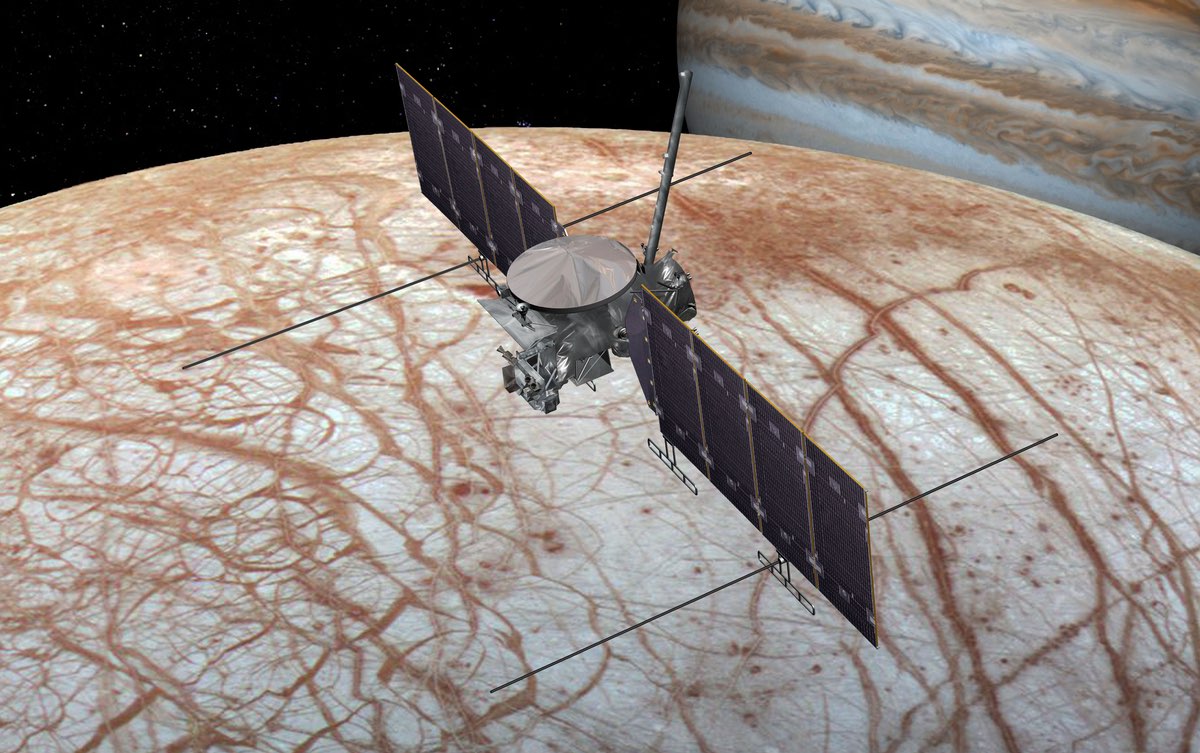WASHINGTON — NASA is no longer considering launching the Europa Clipper mission on the Space Launch System, deciding instead to launch the spacecraft on a commercial rocket it will procure in the next year.
During a Feb. 10 presentation at a meeting of NASA’s Outer Planets Assessment Group (OPAG), leaders of the Europa Clipper project said the agency recently decided to consider only commercial launch vehicles for the mission, and no longer support a launch of the spacecraft on the SLS.
“We now have clarity on the launch vehicle path and launch date,” Robert Pappalardo, project scientist for Europa Clipper at the Jet Propulsion Laboratory, said. That clarity came in the form of a Jan. 25 memo from NASA’s Planetary Missions Program Office to “immediately cease efforts to maintain SLS compatibility” and move forward with a commercial launch vehicle, or CLV, he said.
Congress had directed NASA for several years to launch Europa Clipper on SLS, including provisions to that effect in annual spending bills. NASA, though, requested the flexibility to procure an alternative launch vehicle, arguing it needed the SLS to support its Artemis human lunar exploration program and claiming that a commercial vehicle could save NASA as much as $1.5 billion.
The project continued to support both launch options, but warned doing so would become increasingly complex and expensive. A complicating factor emerged in August, when NASA disclosed “potential hardware compatibility issues” between the spacecraft and SLS.
NASA got the relief it sought in the fiscal year 2021 appropriations bill enacted in December, which allowed NASA to use an alternative to the SLS if the agency determined the vehicle was not available or if the hardware compatibility issue could not be resolved. In January, NASA issued a “sources sought” solicitation for commercial launch options for the mission “in anticipation of a full and open competition for the acquisition of launch services of the Europa Clipper mission,” but did not state that the agency had decided to move ahead with a commercial launch of the mission.
The planned trajectory is the same as outlined in the solicitation, with a launch during a 21-day window in October 2024, with the spacecraft arriving at Jupiter in April 2030. The Mars Earth Gravity Assist, or MEGA, trajectory includes a flyby of Mars in February 2025 and of Earth in December 2026.
A drawback of using a commercial launch vehicle is that circuitous route, as a launch on SLS would have allowed Europa Clipper to go directly to Jupiter, arriving less than three years after launch. That longer cruise will increase operations costs for the mission, said Jan Chodas, project manager for Europa Clipper at JPL, during the meeting.
The project selected the MEGA trajectory over alternatives that would have included a flyby of Venus. “This provides simplifications for the flight system,” Pappalardo said. There are backup launch opportunities, such as a similar MEGA trajectory in 2026 and one in 2025 that includes an additional Earth flyby.
While NASA set a Feb. 8 deadline for responses to its sources sought solicitation, the agency released a follow-up notice Feb. 2 announcing its intent to issue a formal request for proposals (RFP) for launching the mission. That RFP is scheduled for release around March 1, with proposals due around April 14.
SpaceX’s Falcon Heavy launch vehicle is the leading contender to launch Europa Clipper, and has been used in planning for alternatives to SLS. The fiscal year 2021 appropriations bill, though, requires NASA to consider all potential launch vehicles, including those not currently part of its NASA Launch Services 2 contract, through a “full and open competition.”
The announcement didn’t state when NASA would select a launch vehicle. At the OPAG meeting, Chodas said she expected NASA’s Launch Services Program, which will manage that procurement, to select a vehicle “in about a year or so.”
The NASA decision to pursue a commercial vehicle is a relief to the project team. “The resolution of the launch vehicle path forward certainly helps the team from the standpoint of not having to carry a lot of dual paths” to support both SLS and a commercial vehicle, Chodas said. “There is a cost savings there as well as an efficiency gain because we all know now that we can move forward expecting a CLV.”
